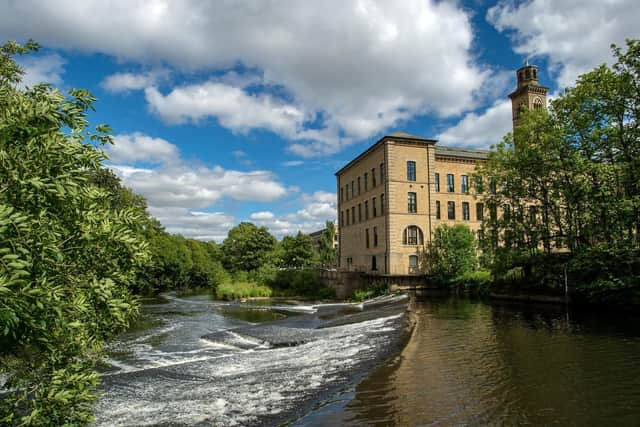This mill worker's son still lives in the same Saltaire cottage his parents bought in 1937
Then, its neat, compact terraced houses were mainly occupied by workers at the nearby Salts Mill, which dominated the rows of streets named after members of the Salt family. The greengrocers, butcher, baker and other tradesmen were tenants of the Salts too. It was a model of paternalism, with the hospital, school, wash-house, church and recreational facilities all being provided by one man.
In the 1930s, when Salts Mill 'twister' Connie Briggs and her husband Jack, who worked at rival mill Parkinson's in Shipley, moved into their new home on William Henry Street after marrying in the United Reformed Church in Saltaire, the village was changing.


Advertisement
Hide AdAdvertisement
Hide AdThey were able to buy their property as it was, by 1937, no longer tied to the mill. The Salts had sold the majority of their interests in the wool business in 1892, and Haworth-born Sir James Roberts was originally one of a consortium of backers who took over the mill. Eight years later, he was the sole owner. Despite initial success, industrial unrest both at home and in foreign markets caused the business to suffer, and he too sold up in 1920.
It passed through several other owners before its final closure in 1986. In 1933, the houses and shops were divested from the mill itself and went onto the open market for the first time. Many were purchased by a private company that saw the value in renovating old workers' housing.
The Briggses were beneficiaries of this new accessibility of the local property market, and their son Michael was later born in the cottage on William Henry Street. Seventy years on, he still lives in the same house.
As local historian and Saltaire Collection manager Maggie Smith pointed out in a Yorkshire Post interview in 2019, there was never actually a rule that stipulated that the tenants had to be employed by the mill - many worked for other mills in Bradford and some in other occupations altogether. Larger properties commonly thought to be reserved for the mill managers could actually be rented by anyone who could afford the rent, often families with several adult children bringing in a wage.


Advertisement
Hide AdAdvertisement
Hide AdMaggie has written of how the closure of Salts Mill did not drastically change the demographics or socio-economic conditions of the village itself, as by that points very few of its residents were working in the mill.
“The Salt family’s involvement with the mill ended in 1923 and by the 1930s the business was struggling. In 1933 the bulk of the village was sold to the Bradford Property Company, who realised that old industrial housing could be improved and sold on,” explains Maggie.
“Even the bigger houses that were supposed to have been built for managers of the mill could actually be rented by anybody - if you had a number of adults in the family who all worked, you could have afforded the rent.”
Nowadays, Saltaire's residents work in a range of occupations, many of them commuting by train to Leeds and Bradford, and the village has developed a reputation for creativity, while retaining the community spirit it has always engendered.
Michael Briggs' story was shared by UNESCO World Heritage Site tour guide and historian Maria Glot, who is based in Saltaire.
Comment Guidelines
National World encourages reader discussion on our stories. User feedback, insights and back-and-forth exchanges add a rich layer of context to reporting. Please review our Community Guidelines before commenting.